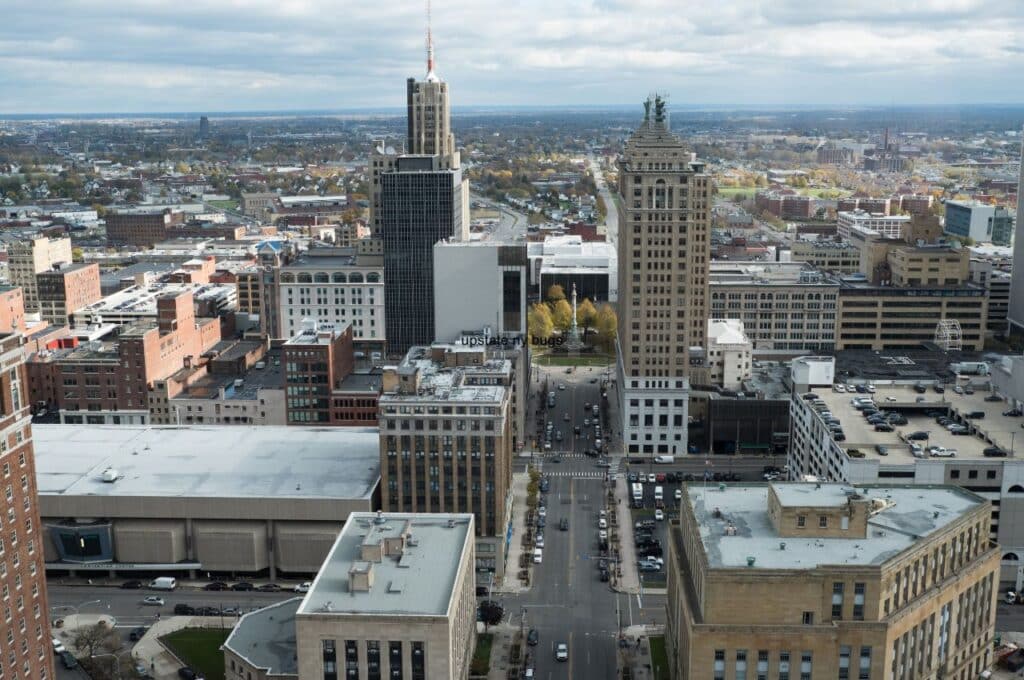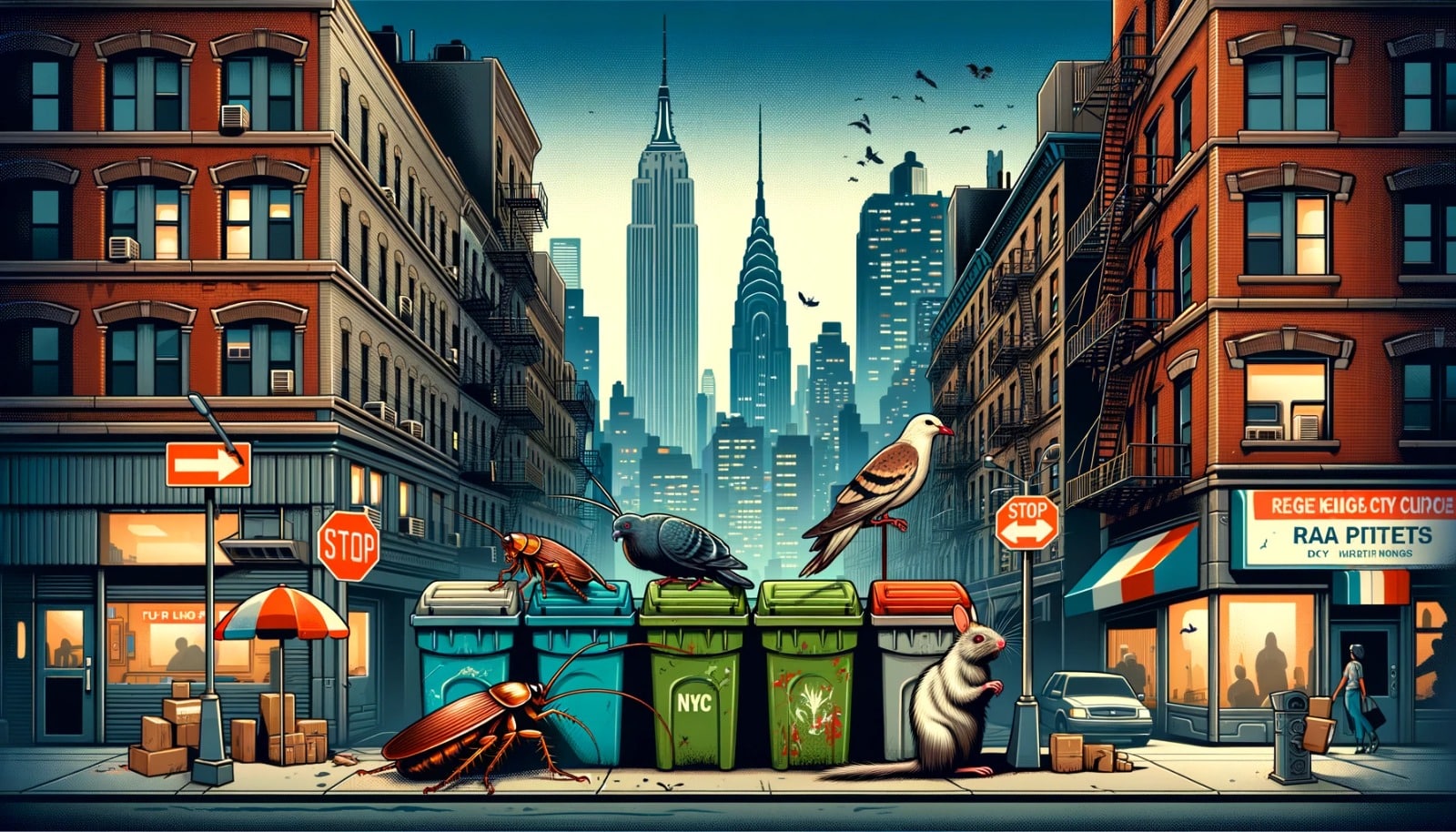Stepping into your New York City apartment only to be greeted by a scurrying cockroach or the sight of bed bugs can be a distressing reality for many city dwellers. The dense population and unique urban landscape of New York City create ideal conditions for a variety of pests. This guide aims to shed light on the common city pests, offering New Yorkers crucial insights for effective management and peace of mind in their living spaces.
Common Bugs in NYC
The bustling streets of New York City are home to more than just a diverse human population; they also host a variety of bugs that have adapted to urban life. Cockroaches top the list as one of the most prevalent pests. The American cockroach, often found in sewers and basements, is notorious for its resilience and ability to thrive in the city’s cramped spaces. These pests are not only a nuisance but also pose health risks, as they can carry pathogens and trigger allergies.
Bed bugs are another significant concern in NYC. Their ability to hitchhike on luggage and clothing makes city apartments particularly vulnerable to infestations. These small, nocturnal insects feed on human blood and are known for their rapid reproduction and resilience against many over-the-counter pest control products.
Rats and mice, while not bugs, are often included in discussions about NYC pests due to their prevalence and impact. These rodents find the city’s abundant food sources and shelter opportunities irresistible, often infiltrating homes and businesses. Their presence raises concerns about property damage and disease transmission.
For city dwellers encountering these pests, understanding their behaviours and habitats is key to effective control. For instance, sealing cracks and keeping living spaces clean can deter cockroaches, while encasing mattresses and regular inspections can help prevent bed bug infestations.
Common NYC Apartment Bugs
While some pests are found throughout the city, others are more specific to apartment living. Silverfish, for instance, are common in NYC apartments. These small, wingless insects thrive in damp environments and are often found in bathrooms, kitchens, and basements. They feed on starches and can damage paper products, clothing, and wallpaper.
House centipedes, with their long legs and quick movements, are another frequent apartment dweller. While their appearance may be alarming, they are generally harmless to humans and can actually help control other pests, such as cockroaches and spiders, by preying on them.
Fruit flies are a common nuisance in apartment kitchens. Attracted to ripe and fermenting fruits and vegetables, these tiny flies can quickly become a problem if produce is left out. Regular cleaning and proper food storage are essential to prevent and control fruit fly infestations.
Managing pests in NYC apartments often requires a combination of cleanliness, vigilance, and sometimes, intervention with pest control products. Ensuring proper sanitation, reducing clutter, and sealing potential entry points can significantly reduce the likelihood of infestations.
Upstate NY Bugs
Venturing beyond the city limits to upstate New York, residents encounter a different set of pest challenges. The more rural and suburban landscapes of upstate NY provide habitats for a variety of bugs not commonly seen in the urban confines of NYC.
Ticks are a significant concern in upstate areas, especially in wooded or grassy regions. These parasitic pests are known carriers of diseases like Lyme disease, making them a public health concern. Preventive measures such as using tick repellents and performing regular tick checks are crucial for those living in or visiting these areas.
Stink bugs, named for the unpleasant odour they release when threatened or crushed, are another common pest in upstate New York. These bugs, often found in gardens, can invade homes in search of warmth as the weather cools. Sealing entry points and using screens on windows and doors can help keep stink bugs at bay.
Ladybugs, while beneficial for controlling aphids in gardens, can also become nuisances when they cluster in large numbers inside homes during the colder months. While they don’t pose a health risk, their presence can be bothersome. Gentle removal and release outdoors is often the best approach for dealing with ladybugs.
The contrast between the city and upstate pests highlights the diverse ecological landscapes within New York and the need for tailored pest management strategies depending on the location.

Common Insects in New York
New York State is home to a wide array of insect species, reflecting its varied climates and ecosystems. This diversity means that residents across the state may encounter different types of insects, each requiring specific management strategies.
Mosquitoes are a common nuisance across much of New York, especially in areas with standing water where they breed. They not only cause irritating bites but can also transmit diseases like West Nile virus. Effective control involves eliminating breeding grounds and using personal repellents.
Carpenter ants, prevalent in both urban and rural areas, can cause structural damage to buildings. These large ants build nests in wood, often in damp areas. Identifying and addressing moisture issues, along with professional extermination, is often necessary to combat carpenter ant infestations.
Other insects like earwigs, pillbugs, and various beetle species are also found throughout New York. While these insects are generally harmless, they can become pests when they invade homes in large numbers. Regular home maintenance, including sealing cracks and maintaining clean, dry environments, can help prevent these invasions.
The vast range of common insects in New York, from mosquitoes to carpenter ants, underscores the importance of understanding local pest ecology for effective home pest management.
NYC Bug Identification
Proper identification of bugs is a critical step in effective pest management, especially in a diverse urban environment like New York City. Misidentification can lead to ineffective control methods and potentially exacerbate the problem.
Physical characteristics such as size, shape, colour, and the number of legs are key in identifying different bugs. For example, bed bugs are small, oval, and reddish-brown, while cockroaches are larger and darker. Behaviour, such as where and when the bugs are seen, can also provide important clues for identification.
NYC residents can utilise resources like Pest Share’s identification guides, which offer detailed descriptions and images of common city pests. These resources help ensure that the right control strategies are employed, whether it’s for a minor nuisance or a more serious infestation.
Accurate bug identification is particularly important in densely populated areas like NYC, where different pests can require vastly different management approaches. By correctly identifying the pests they encounter, New Yorkers can take more effective and targeted actions to maintain pest-free living spaces.
Prevention and Control Strategies
Effective pest management in New York City not only involves dealing with current infestations but also taking proactive measures to prevent future problems. A multi-faceted approach, combining cleanliness, physical barriers, and, when necessary, chemical treatments, is often most effective.
Regular cleaning and decluttering play a crucial role in deterring pests. Reducing clutter eliminates potential hiding spots for bugs, while keeping kitchens clean and free of food scraps can prevent attracting pests like cockroaches and rodents. Proper food storage, especially in airtight containers, is also essential in keeping pantry pests at bay.
Physical barriers, such as sealing cracks and gaps in walls, doors, and window frames, can significantly reduce the entry of pests into homes. Installing screens on windows and vents can help prevent flying insects like mosquitoes and flies from getting indoors.
For some persistent or severe infestations, chemical treatments may be necessary. These should be used judiciously and, preferably, by professionals to ensure safety and effectiveness. Natural alternatives, such as diatomaceous earth for bed bugs or bait traps for cockroaches, can also be effective and are often safer options.
Professional Pest Management in NYC
There are times when DIY pest control methods fall short, especially in dense urban settings like New York City. Professional pest management services offer expertise, specialised equipment, and advanced treatment methods that are often necessary for complete eradication.
Pest Share provides expert pest control services tailored to the unique challenges of NYC living. Their team of professionals is equipped to handle everything from common apartment bugs to more daunting infestations like bed bugs or rodents. They not only focus on eliminating the current problem but also provide guidance on prevention to avoid future infestations.
Conclusion
Navigating the world of bugs and pests in New York City doesn’t have to be a daunting task. Armed with the right knowledge and strategies, you can keep your living space comfortable and pest-free. And remember, whether it’s a minor annoyance or a major infestation, Pest Share is just a call away, ready to provide expert advice and professional solutions. Take control of your home’s pest situation and enjoy the peace of mind that comes with a bug-free environment.





